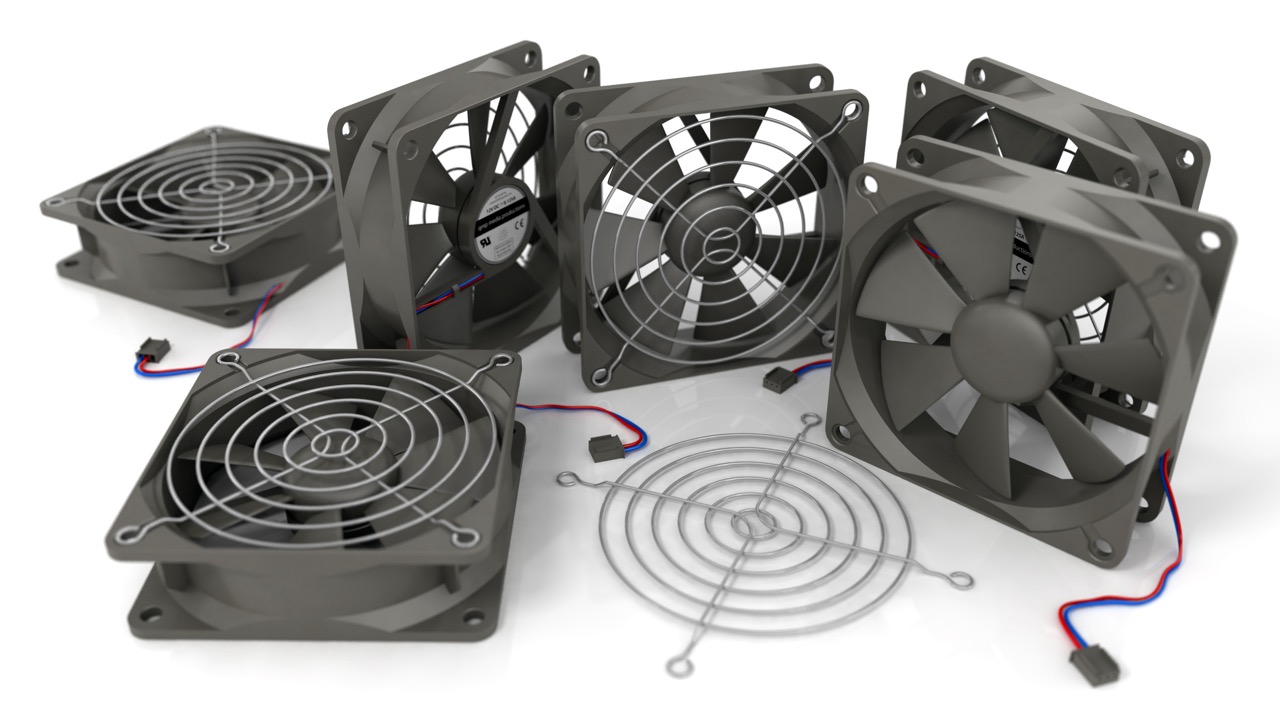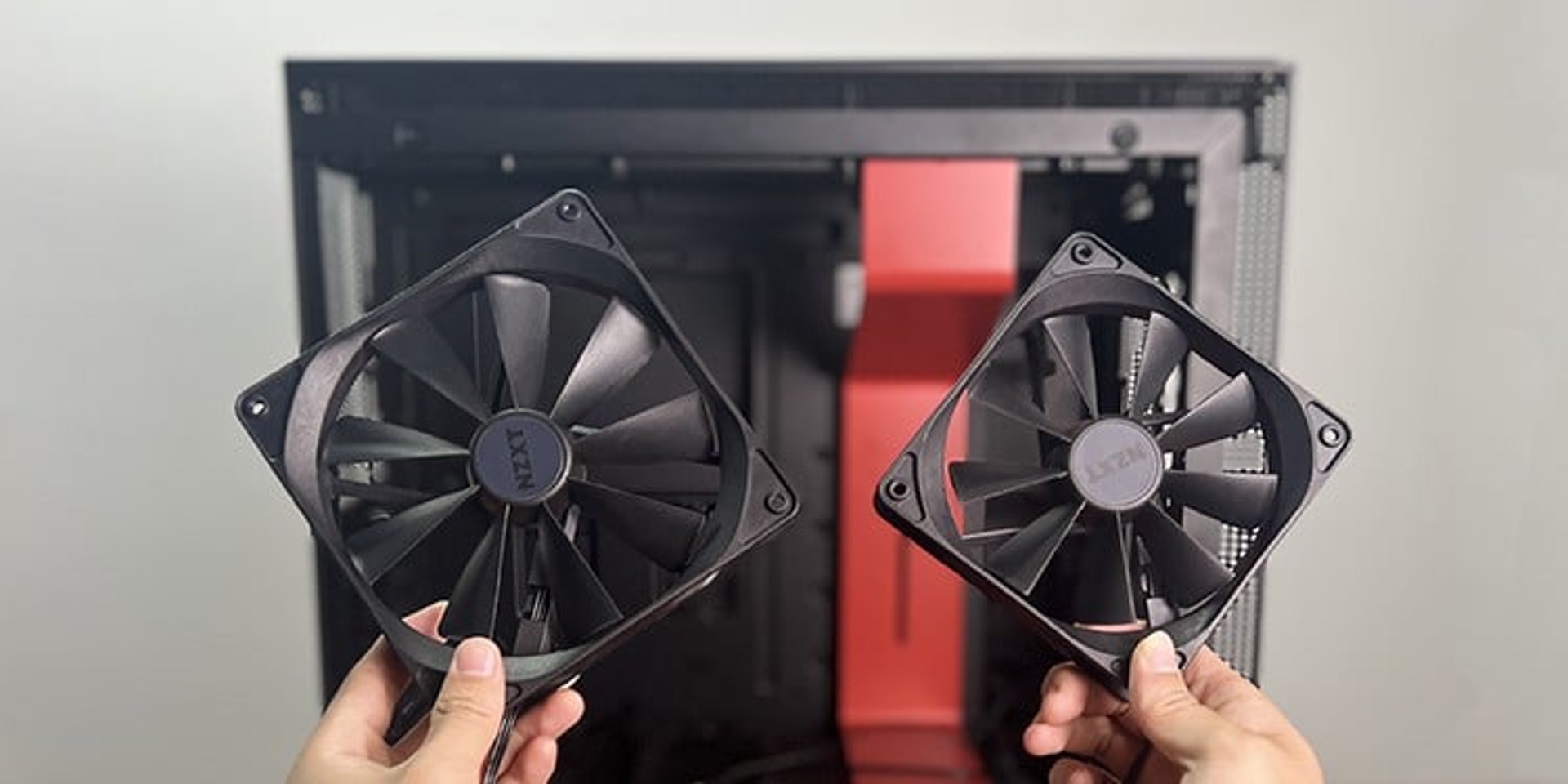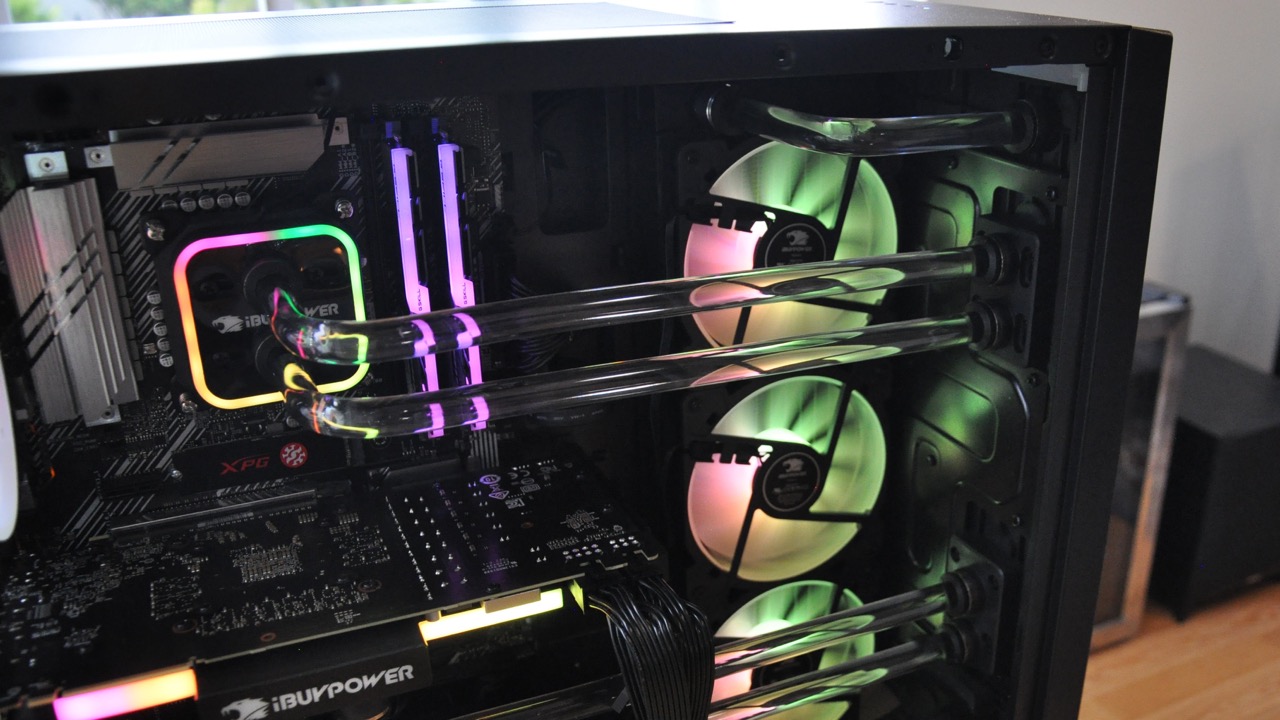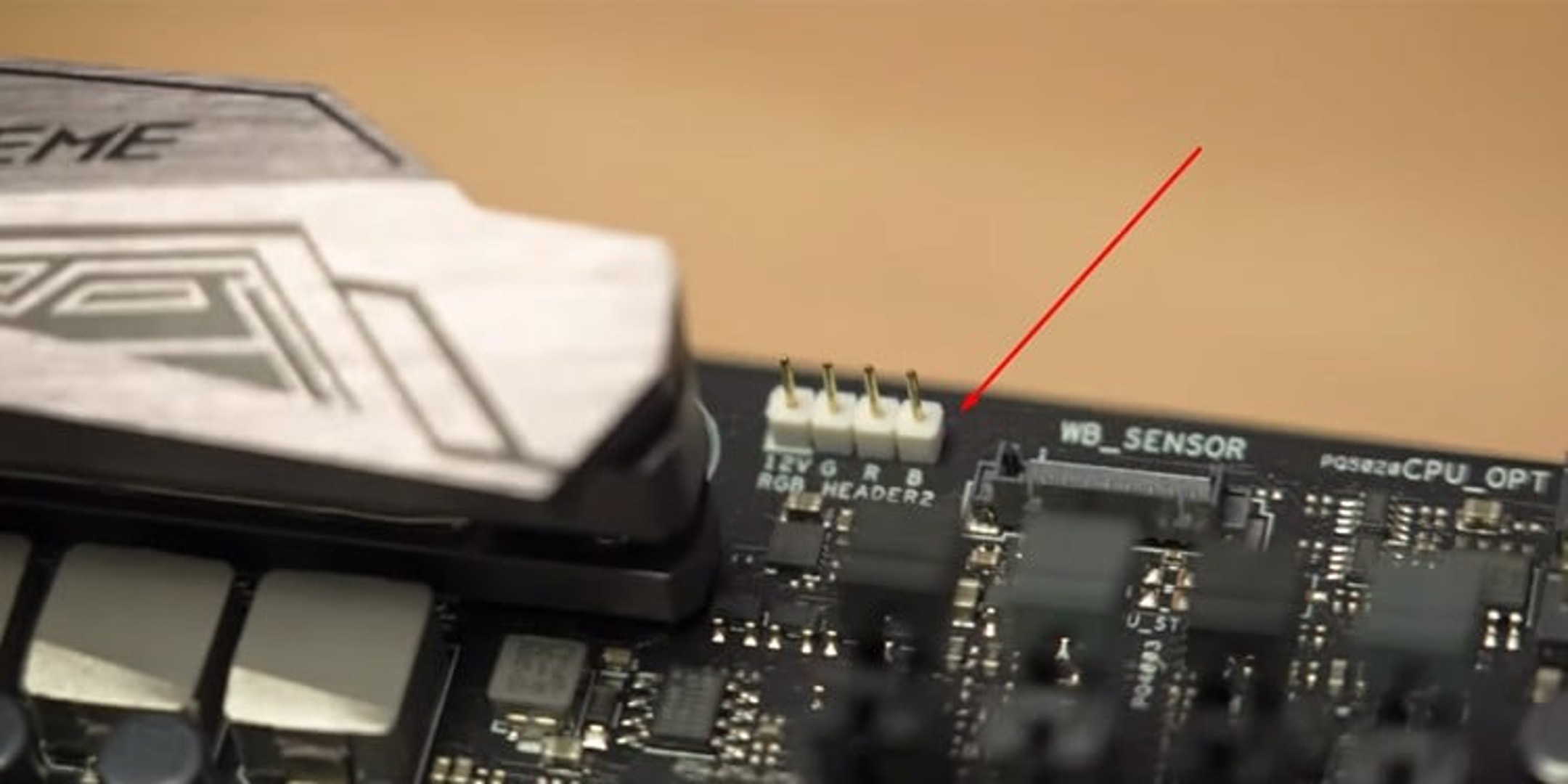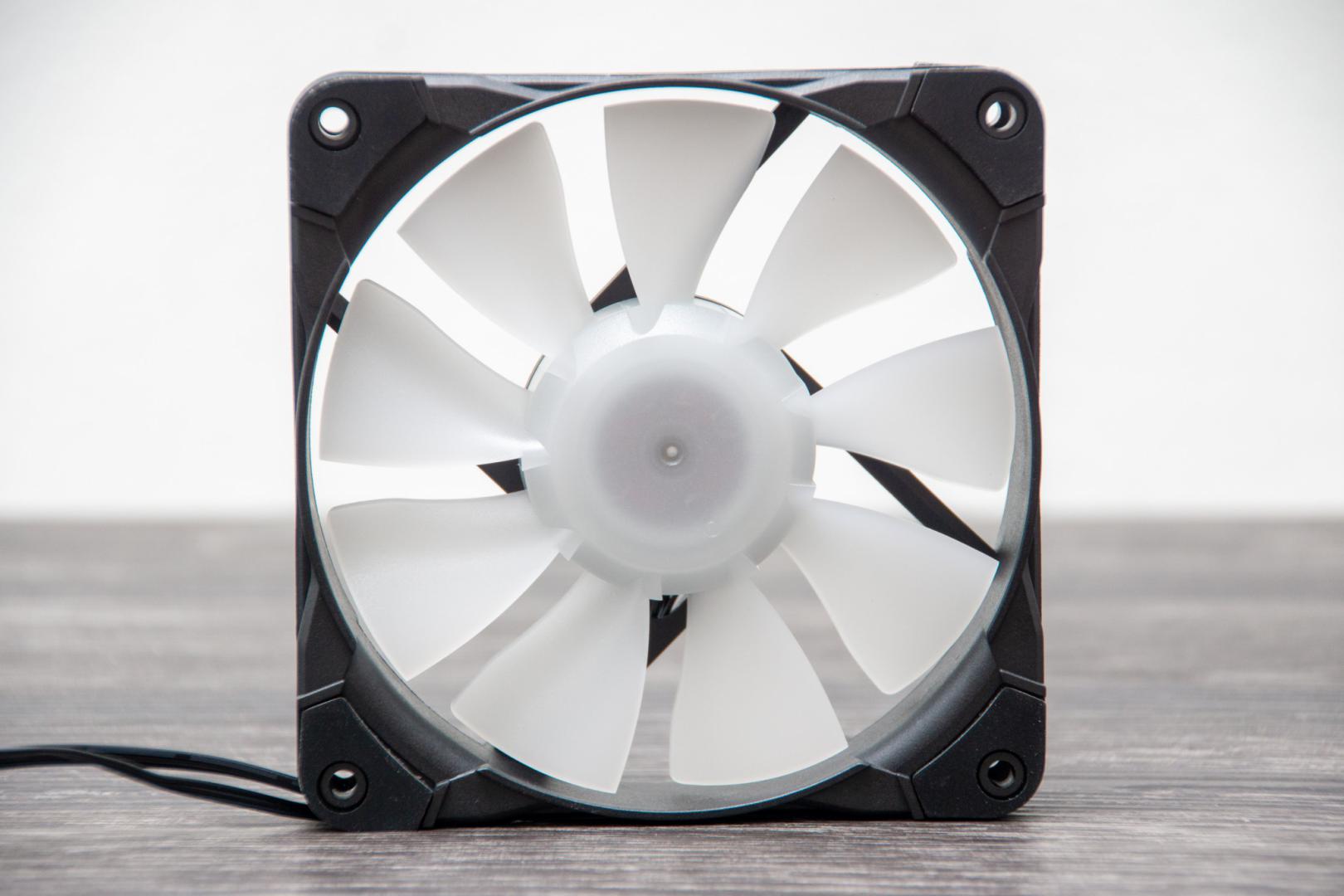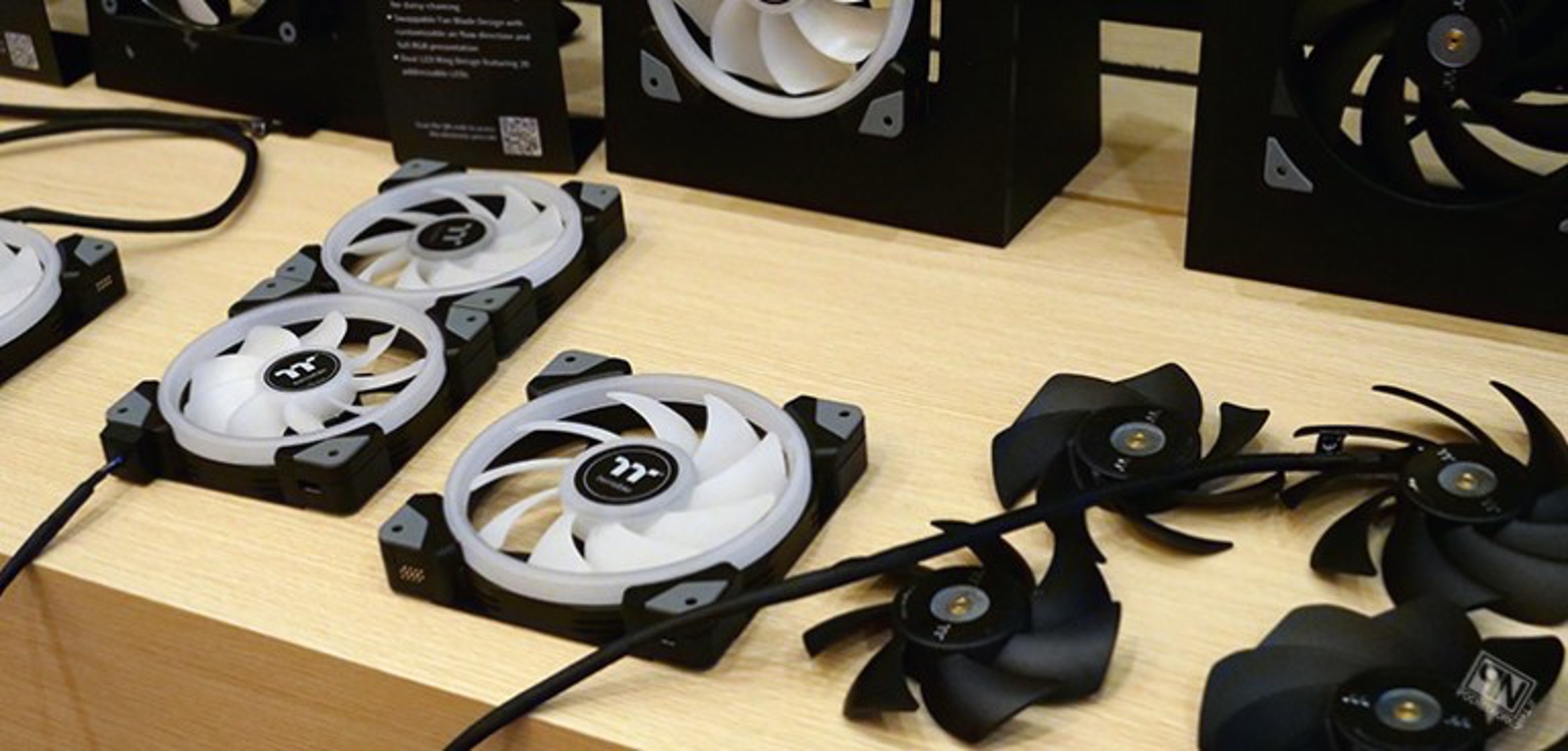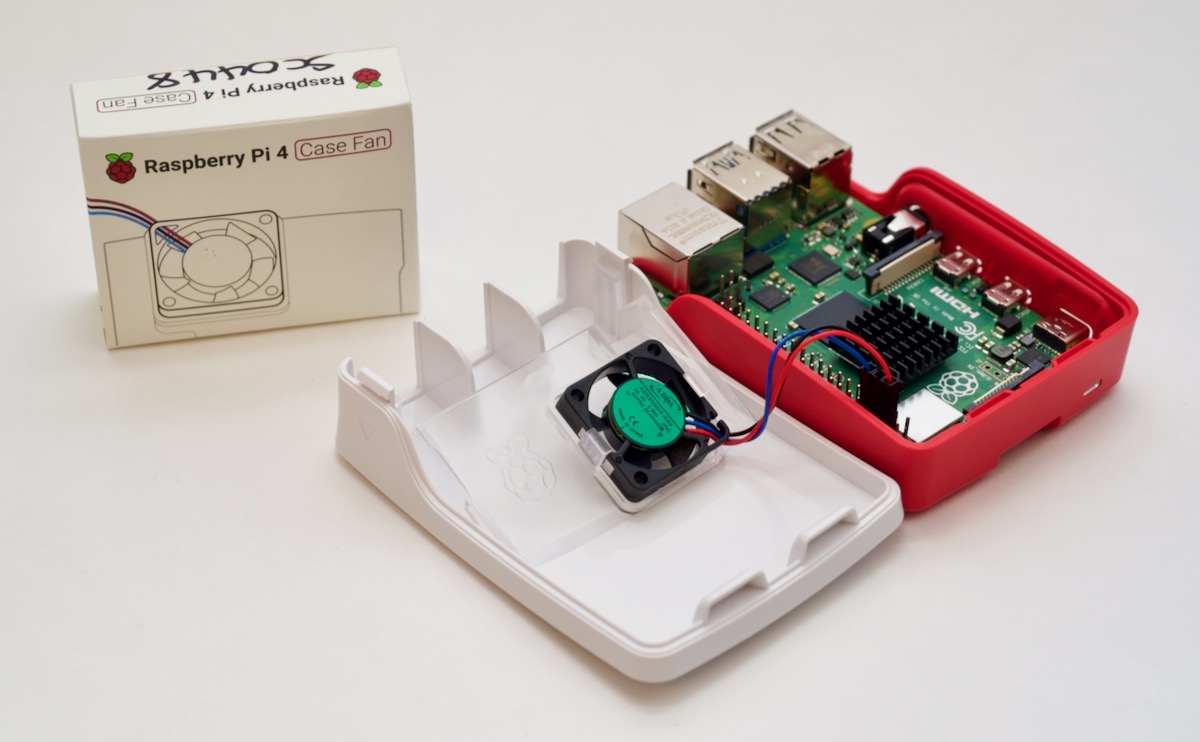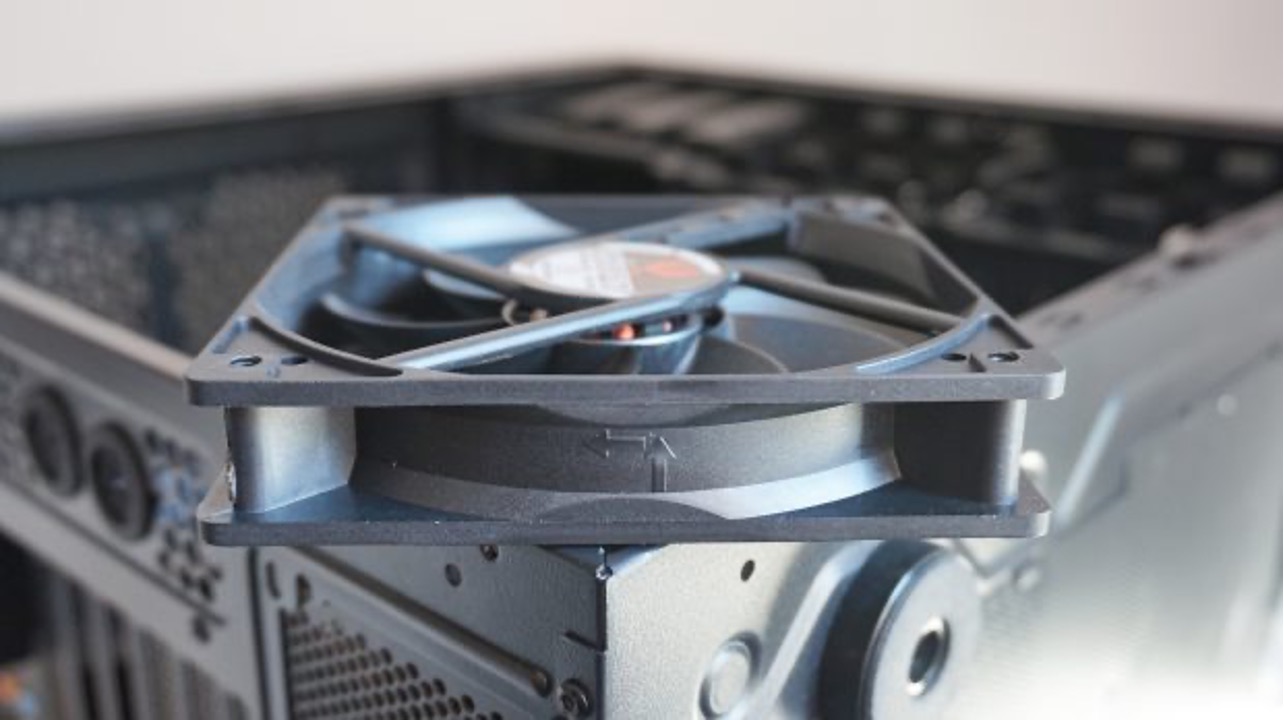Introduction
Welcome to the world of computer cooling, where efficient airflow and temperature regulation are vital for maintaining the optimal performance and longevity of your system components. Whether you are a seasoned PC enthusiast or a casual user, understanding the importance of case fans is crucial in ensuring the stability and reliability of your computer.
Computer components generate heat as they operate, and excessive heat buildup can lead to reduced performance, thermal throttling, and even permanent damage to hardware. This is where case fans come in, serving as the primary means of cooling your computer by expelling hot air and bringing in cool air, creating a balanced and controlled environment.
By effectively dissipating heat from critical components such as the CPU, GPU, and motherboard, case fans play a vital role in maintaining optimal operating temperatures, preventing overheating, and preserving the lifespan of your hardware. Understanding the different types, sizes, and features of case fans will help you make informed decisions when it comes to cooling your system.
In this article, we will delve into the world of case fans, exploring their purpose, types, airflow specifications, installation procedures, and troubleshooting tips. Whether you’re planning to build a new system or upgrade your existing setup, this guide will provide you with the knowledge to make informed choices and ensure efficient cooling for your valuable hardware components.
A Brief Overview of Computer Cooling
When it comes to computer cooling, it’s essential to understand the basic principles behind the process. Computers generate heat as a byproduct of their operations, and if left unchecked, this heat can cause components to overheat, resulting in system instability and potential hardware damage. Effective cooling is necessary to maintain optimal performance and extend the lifespan of your computer.
There are various components within a computer that require cooling, with the CPU and GPU being the primary heat producers. These components have their own cooling mechanisms, such as heatsinks and dedicated fans. However, to ensure overall system cooling, additional measures such as case fans are crucial.
Case fans are strategically placed within the computer case to provide airflow and expel hot air while drawing in cooler air from the surroundings. They help dissipate heat from components such as the CPU, GPU, motherboard, and RAM, effectively lowering their temperatures and ensuring stable operation.
In addition to case fans, other cooling methods such as liquid cooling systems, heat pipes, and aftermarket cooling solutions are available for more advanced cooling needs. However, for most computer setups, case fans are the simplest and most cost-effective cooling solution.
It’s important to note that proper computer cooling also involves consideration of the case design and cable management. A well-ventilated case with sufficient clearance between components and organized cables allows for better airflow and enhances cooling efficiency.
Now that we have an overview of computer cooling, let’s dive deeper into the world of case fans and their important role in maintaining an optimal operating environment for your computer hardware.
The Importance of Case Fans
Case fans play a crucial role in maintaining a healthy temperature range within your computer. They provide necessary airflow, expelling hot air and bringing in cooler air to prevent overheating and ensure the optimal performance of your system components. Understanding the importance of case fans can help you make informed decisions when it comes to cooling your computer.
One of the primary reasons case fans are important is their ability to dissipate heat generated by various components. Modern CPUs and GPUs can produce a significant amount of heat, especially during demanding tasks like gaming or video editing. Without proper cooling, these components can quickly reach high temperatures, leading to thermal throttling or even permanent damage.
Case fans work in conjunction with other cooling mechanisms, such as heatsinks and CPU/GPU fans, to ensure efficient heat dissipation. By expelling hot air from the case and introducing cooler air, they maintain a balanced and controlled environment, helping to regulate temperature and prevent overheating.
In addition to temperature regulation, case fans also aid in the prevention of dust buildup. As air is circulated through the case, it helps dislodge and remove dust particles that can accumulate on components and hinder airflow. By reducing dust accumulation, case fans help maintain optimal cooling performance and also contribute to the overall cleanliness and longevity of your system.
Another important aspect of case fans is their role in reducing noise. Many modern case fans are designed with noise-reducing technology, such as rubber mounting pads or low-noise bearings. By efficiently moving air while producing minimal noise, these fans contribute to a quieter and more enjoyable computing experience.
Furthermore, case fans can also improve the lifespan and reliability of your computer’s hardware. By keeping components cool, case fans help prevent thermal stress on sensitive parts, reducing the likelihood of premature failure. This can ultimately save you money by extending the lifespan of your system and minimizing the need for costly component replacements.
Overall, case fans are a vital component of any computer cooling setup. They help regulate temperatures, prevent overheating, reduce noise levels, and improve the longevity and reliability of your hardware. By investing in quality case fans and ensuring proper airflow within your system, you can enjoy optimal performance, stability, and longevity for your computer.
What Is a Case Fan?
A case fan, also known as a chassis fan, is a hardware component designed to provide airflow within the computer case. It is an essential part of a cooling system that helps maintain optimal operating temperatures for the internal components.
Generally, a case fan consists of a motor hub with blades or impellers mounted on it. The motor hub is connected to a power source, typically the motherboard, via a fan header or a dedicated fan controller. When powered on, the motor spins the blades, creating airflow within the case.
Case fans are available in various sizes, typically measured in millimeters (mm). The most common sizes are 120mm and 140mm, although smaller 80mm and 92mm fans are also common. Choosing the right size of case fan is essential to ensure compatibility with your case, as different cases may have specific mounting locations and fan size limitations.
When it comes to airflow, case fans can be categorized into two main types: intake fans and exhaust fans. Intake fans draw in cool air from the surrounding environment and direct it towards the internal components, while exhaust fans expel hot air from the case. The combination of intake and exhaust fans creates a balanced airflow that helps maintain consistent temperature levels throughout the system.
Additionally, case fans can be further classified based on their mounting locations. For example, front fans are typically placed near the front panel to intake cool air, while rear fans are situated at the back of the case to exhaust hot air. Other common mounting locations include the top and sides of the case, depending on the case design and airflow requirements.
Nowadays, case fans often come with additional features, such as RGB lighting for aesthetic customization or fan speed control for adjusting airflow and noise levels. These extra features allow users to personalize their systems while still maintaining efficient cooling performance.
In summary, a case fan is a hardware component that helps regulate airflow and maintain optimal operating temperatures within a computer case. It comes in various sizes, types, and mounting locations, and plays a critical role in cooling the internal components to ensure system stability and longevity.
Types of Case Fans
Case fans come in various types, each designed to cater to specific cooling needs and preferences. Understanding the different types of case fans available will help you choose the most suitable option for your computer setup.
1. Standard Case Fans: These are the most common type of case fans available. They are designed to provide a balanced airflow within the case, expelling hot air and drawing in cool air. Standard case fans come in various sizes, such as 120mm and 140mm, and are compatible with most computer cases. They are an excellent choice for general-purpose cooling.
2. High-Airflow Case Fans: As the name suggests, high-airflow case fans are designed to move a large volume of air. They feature larger fan blades or impellers and higher rotational speeds, allowing for increased airflow within the case. These fans are ideal for systems that generate high levels of heat, such as gaming PCs or workstations, where additional cooling is necessary to prevent overheating.
3. Silent Case Fans: If noise reduction is a priority for you, consider opting for silent case fans. These fans are designed with noise reduction features, such as low-noise bearings or rubber mounting pads, to minimize noise levels while maintaining efficient cooling performance. Silent case fans are a great choice for users who prefer a quiet computing experience.
4. Static Pressure Case Fans: Static pressure case fans are specifically designed to overcome obstacles in the airflow path, such as heatsinks or dense coolers. They feature more rigid fan blades and an enhanced motor design, allowing them to generate higher pressure to push or pull air through tight spaces. These fans are commonly used for cooling components like CPU coolers or radiators in liquid cooling systems.
5. RGB Case Fans: For those who want to add a touch of customization and personalization to their system, RGB case fans are an appealing option. These fans come with integrated RGB lighting, allowing you to choose from a variety of colors and lighting effects. RGB case fans can sync with other RGB components in your system to create a harmonious and visually stunning aesthetic.
6. Hybrid Case Fans: Hybrid case fans combine the features of high-airflow fans and static pressure fans. They boast a combination of airflow and pressure capabilities, making them versatile options that can provide efficient cooling in various scenarios. Hybrid case fans are popular among users who require a multipurpose cooling solution.
It’s important to note that depending on your computer case’s design and available fan mounting locations, certain types of case fans may be more suitable than others. Considering factors such as noise levels, airflow requirements, and your specific cooling needs will help you choose the right type of case fan for your setup.
Airflow and CFM (Cubic Feet per Minute)
When it comes to case fans, one important aspect to consider is airflow. Airflow refers to the movement of air within the computer case, and it plays a crucial role in cooling the internal components efficiently. Understanding airflow and its measurement unit, CFM (cubic feet per minute), can help you make informed decisions when choosing case fans for your system.
CFM is a measurement that indicates the volume of air a fan can move in one minute. It quantifies the fan’s airflow capacity, with higher CFM values representing stronger airflow. The higher the CFM value, the more air the fan can move, resulting in better cooling performance.
When considering airflow, it’s essential to assess both intake and exhaust fans. Intake fans are responsible for bringing in cool air from the surroundings and directing it towards the internal components, while exhaust fans expel hot air from the case. A balanced combination of intake and exhaust fans ensures proper airflow and temperature regulation within the system.
When choosing case fans, it’s important to consider a fan’s CFM rating along with its size and design. By matching the airflow capacity of the fans to the cooling needs of your system, you can effectively manage heat buildup and maintain optimal operating temperatures.
However, it’s crucial to note that a high CFM rating doesn’t always guarantee superior cooling performance in every case. The effectiveness of airflow also depends on factors such as fan placement, case design, and the presence of any obstacles that may impede or redirect the airflow. Therefore, it’s essential to consider the overall cooling setup and ensure that all components work together harmoniously to achieve efficient cooling.
Additionally, it’s worth mentioning that the noise level of a fan can sometimes be associated with its CFM rating. Higher CFM fans may produce more noise due to increased airflow and rotational speeds. If noise reduction is a priority, considering fans specifically designed for quiet operation or utilizing fan speed control features can help strike a balance between cooling performance and noise levels.
Airflow and CFM are key factors to consider when choosing case fans for your computer. By understanding the concept of airflow and evaluating a fan’s CFM rating in relation to your cooling needs, you can ensure efficient cooling and maintain optimal operating temperatures for your system’s components.
Fan Sizes and Compatibility
When selecting case fans for your computer, it’s essential to consider their sizes and compatibility with your case. Fan sizes play a crucial role in determining their compatibility with specific cases and their overall cooling performance. Understanding fan sizes and their corresponding compatibility will help you make informed decisions when upgrading or replacing case fans.
The most common fan sizes in the market are 120mm and 140mm. These sizes provide a balance between airflow capacity and space requirements. Smaller fan sizes, such as 80mm and 92mm, are also available, but they are less common in modern cases and are often utilized in compact or specialized builds.
Before purchasing case fans, it’s essential to check your computer case’s specifications or manual to determine the supported fan sizes. Most cases will list the maximum fan size that can be installed in various locations, such as the front, rear, top, or side panels. Installing fans that are too large for the available space can lead to compatibility issues and may obstruct other components.
It’s worth noting that fan sizes and compatibility considerations apply not only to the physical dimensions of the fan but also to the mounting mechanism. Case fans are typically secured to the case using screws or other mounting options, and these mechanisms must align with the fan and case specifications for proper installation.
When upgrading or adding case fans, it’s important to maintain a balance between intake and exhaust airflow. Consider the number and placement of the fans to ensure adequate cooling throughout the system. Having a mix of intake and exhaust fans strategically placed throughout the case can help create a balanced airflow and maximize cooling efficiency.
In some cases, achieving optimal cooling may require additional accessories, such as fan splitters or fan controllers, to manage the power supply and control the fan speeds effectively. These accessories can help ensure that the fans receive sufficient power and allow for customization based on cooling requirements and noise preferences.
Lastly, if you are considering replacing case fans, it’s recommended to choose fans from reputable manufacturers that offer high-quality products. Quality fans often feature improved performance, durability, and noise reduction technologies, leading to a more reliable and efficient cooling system.
By understanding fan sizes and compatibility, you can make informed decisions when selecting case fans for your computer. Ensuring that the chosen fan sizes align with the case’s specifications and maintaining a balanced airflow will help create an optimal cooling environment for your system’s components.
Understanding Fan Bearings
Fan bearings are a critical component of case fans, providing stability, smooth movement, and longevity. Understanding the different types of fan bearings can help you choose fans that suit your specific requirements for noise levels, durability, and overall performance.
1. Sleeve Bearings: Sleeve bearings, also known as bush bearings, are the most common type of fan bearings. They consist of a shaft surrounded by a sleeve or a thin layer of oil lubricant. These bearings are cost-effective and provide decent performance. However, sleeve bearings tend to generate more friction and produce higher noise levels compared to other bearing types. They are suitable for general-purpose applications where noise levels are not a primary concern.
2. Ball Bearings: Ball bearings are known for their durability and longevity. They use small steel balls to reduce friction between the fan shaft and the bearing race. Ball bearings allow for smoother rotation and have lower noise levels compared to sleeve bearings. These bearings are ideal for high-performance systems that demand longevity and reduced noise output. However, they are often more expensive than sleeve bearings.
3. Fluid Dynamic Bearings (FDB): FDB, also referred to as hydrodynamic bearings, utilize a thin layer of fluid to reduce friction between the fan shaft and the bearing. This design results in quiet operation and increased lifespan. FDB fans are known for their excellent reliability, low noise levels, and improved cooling performance. They are often preferred for high-end systems or applications where noise reduction and long-term reliability are crucial.
4. Maglev Bearings: Maglev, short for magnetic levitation, is the latest advancement in fan bearing technology. Maglev fans do not rely on physical bearings but instead use magnetic fields to suspend the fan shaft, eliminating friction entirely. This design ensures virtually silent operation and increased fan longevity. Maglev fans are often expensive and typically used in high-performance systems or for enthusiasts who value near-silent operation.
When choosing case fans, it’s important to consider the type of bearing used. Sleeve bearings are suitable for budget-conscious users or applications where noise levels are not a significant concern. Ball bearings are a reliable and durable option for general-purpose usage. FDB fans are ideal for those seeking quieter operation and increased longevity. Maglev fans represent the pinnacle of fan bearing technology, offering unparalleled silence and top-notch performance.
Ultimately, the choice of fan bearings depends on your specific requirements and budget constraints. Consider the noise levels you can tolerate, the desired fan lifespan, and the cooling performance needed for your system. By understanding the different fan bearing types and their characteristics, you can make an informed decision when selecting case fans for your computer.
Fan Speed and Noise Levels
Fan speed and noise levels are crucial considerations when choosing case fans for your computer. The speed at which a fan operates directly affects its cooling performance, while noise levels can significantly impact your overall computing experience. Understanding the relationship between fan speed and noise levels will help you strike a balance between cooling efficiency and a quiet system.
Fan speed is measured in revolutions per minute (RPM). It indicates how fast the fan blades rotate and determines how much air the fan can move. Typically, higher fan speeds result in increased airflow and improved cooling performance. However, higher fan speeds can also generate more noise due to the increased air turbulence and friction between the fan blades and the surrounding air.
Noise levels produced by fans are measured in decibels (dB). Lower dB values indicate quieter operation, while higher values represent louder noise output. Noise levels are influenced by factors such as fan speed, fan bearing type, blade design, and overall fan quality.
It’s important to consider your noise tolerance and the specific cooling requirements of your system when choosing case fans. If noise reduction is a priority, you can opt for fans with lower RPM ranges or those specifically designed for noise reduction, such as fans with low-noise bearings or rubber mounting pads.
Many case fans also offer fan speed control options, either through voltage regulation or PWM (Pulse Width Modulation) control. These features allow you to adjust the fan speed manually or through software control, enabling you to find the optimal balance between cooling performance and noise levels based on your specific needs.
Additionally, fan blade design can also play a role in noise levels. Fans with specially designed blade shapes or features like curved blades, winglets, or grooves can help reduce air turbulence and noise generation. These features promote smoother airflow and quieter operation while maintaining efficient cooling performance.
When choosing case fans, it’s crucial to read reviews and consider manufacturers that prioritize noise reduction. Reputable manufacturers often provide detailed specifications, including fan noise levels at different speeds, helping you make an informed decision. Investing in high-quality fans from trusted brands can result in quieter operation and improved reliability.
Overall, finding the right balance between fan speed and noise levels is essential for creating an optimal cooling system. By considering your noise tolerance, exploring fan speed control options, and choosing fans with noise reduction features, you can achieve an efficient and quiet cooling solution tailored to your specific needs.
RGB and Aesthetic Considerations
RGB lighting has become increasingly popular in the world of case fans, offering users the opportunity to add a touch of personalization and enhance the visual appeal of their computers. Understanding the RGB options and considering aesthetic factors will help you create a system that not only performs well but also looks great.
RGB (Red-Green-Blue) lighting allows you to customize the color, intensity, and effects of your case fans. With RGB fans, you can choose from a wide spectrum of colors and various lighting effects, such as static colors, color cycling, or pulsating patterns. Some fans even support sync capabilities with compatible software or motherboards, enabling you to create synchronized lighting effects across multiple components.
Aesthetics play a significant role in many computer builds, and RGB fans provide an excellent opportunity to showcase your personal style and creativity. You can match the lighting color scheme to your overall color theme or create unique lighting configurations that make your system stand out.
RGB fans not only offer customization options but also enhance the overall visual appeal of your computer. The vibrant and dynamic lighting effects can create an eye-catching display, adding a sense of depth and excitement to your case. Whether you prefer a subtle and elegant lighting setup or a bold and vibrant display, RGB fans allow you to express your individuality and create a visually stunning system.
When considering RGB and aesthetic factors, it’s important to choose fans that are not only visually appealing but also meet your performance requirements. Look for fans that offer a balance between aesthetics and cooling performance. Ensure that the RGB lighting features do not compromise the fan’s airflow capacity or increase noise levels.
Additionally, consider the overall design and layout of your case when incorporating RGB fans. Some cases have built-in lighting features or tempered glass panels that can enhance the visual impact of RGB lighting. It’s also important to plan your RGB setup, considering factors such as cable management and the accessibility of RGB control options.
Lastly, it’s worth noting that aesthetics should be a consideration alongside performance and practicality. While RGB lighting can enhance the visual appeal of your computer, it’s crucial to ensure that it does not overshadow the importance of efficient cooling and reliable performance. Prioritize the functionality and performance of your case fans, and use RGB lighting to complement the overall aesthetic rather than overshadow it.
In summary, RGB lighting provides an exciting opportunity to personalize your computer and create a visually stunning system. By considering aesthetics, matching lighting schemes to your color theme, and selecting fans that provide a balance between performance and customization, you can create a system that not only performs well but also looks exceptional.
Installing and Maintaining Case Fans
Installing case fans is a relatively straightforward process, and proper maintenance can ensure their longevity and optimal performance. Whether you’re adding new fans to your system or replacing existing ones, following the correct installation and maintenance practices will help keep your computer cool and running smoothly.
1. Before installation: Start by gathering the necessary tools, such as a screwdriver, and carefully review your computer case’s manual or specifications for the recommended fan sizes and mounting locations. Ensure that your computer is powered off and unplugged before proceeding with any installation or maintenance tasks.
2. Mounting the fans: Depending on your case, you may need to remove panels or brackets to access the fan mounting points. Align the fan with the mounting holes and use the appropriate screws to secure it in place. Make sure the fan is properly connected to the fan headers on the motherboard or any fan controllers you may have.
3. Airflow direction: Pay attention to the direction of airflow when installing fans. Typically, front or side fans should intake cool air into the case, while rear or top fans should exhaust hot air. This ensures proper circulation and temperature regulation within the system.
4. Cable management: Organize and route the fan cables neatly to avoid obstruction and interference with other components. Use cable ties or other cable management accessories to keep things tidy and improve airflow within the case.
5. Maintaining cleanliness: Regularly clean your case fans to prevent the buildup of dust and debris, which can impede airflow and affect cooling performance. Use compressed air or a soft brush to gently remove accumulated dust from the fan blades and surrounding areas.
6. Testing and monitoring: After installation, power on your computer and ensure that the fans are spinning correctly. Use monitoring software or BIOS settings to check fan speed and ensure they are operating within the desired range. Monitor temperatures as well to ensure effective cooling.
7. Periodic fan maintenance: Fans may require occasional maintenance to extend their lifespan. This includes periodically lubricating sleeve bearings with a few drops of lubricant and ensuring that ball or fluid dynamic bearings are clean and free from debris. Follow the manufacturer’s recommendations for specific bearing maintenance requirements.
8. Replacement: Over time, fans may wear out or become noisy. If you notice excessive fan noise, vibrations, or decreased cooling performance, it may be time to replace the fan. Replace fans with new ones that match the size, airflow, and noise requirements of your system.
By following proper installation procedures and conducting regular maintenance, you can maximize the performance and lifespan of your case fans. This will ensure optimal cooling capabilities and help maintain the stability and reliability of your computer system.
Troubleshooting Common Issues with Case Fans
While case fans typically run smoothly and efficiently, there are some common issues that you may encounter during their operation. Understanding these issues and knowing how to troubleshoot them can help you address any problems and ensure the proper functioning of your case fans.
1. Excessive fan noise: If your case fans are making excessive noise, it could be due to several factors. Check if the fans are clean and free from dust, as accumulated dust can cause the fan blades to become unbalanced and generate noise. Additionally, ensure that the fans are securely mounted and that their screws are tightened properly.
2. Inconsistent or low airflow: If you notice reduced airflow from your case fans, it may indicate an issue with fan speed. Ensure that the fans are running at their intended speeds and that they are not obstructed by cables or other components. Adjusting fan speed settings in the BIOS or through fan control software can help troubleshoot this issue.
3. Non-spinning fans: If a fan is not spinning, first check to ensure it is properly connected to the power source, such as the fan header on the motherboard or a fan controller. If the connection is secure, try connecting the fan to a different power source to determine if the issue lies with the original connection.
4. Overheating components: If you notice that your system components are overheating despite the presence of case fans, it could indicate improper fan placement or inadequate airflow. Review the fan placement within your case and ensure that the intake and exhaust fans are properly positioned to achieve balanced airflow. Consider adding additional fans or adjusting their placement to improve cooling.
5. Unresponsive fan control: If you are unable to control the speed or performance of your case fans through software or BIOS settings, ensure that you have the latest drivers or firmware installed. If the issue persists, double-check that the fans are compatible with your motherboard or fan control system. In some cases, you may need to update the firmware or use standalone fan controllers to control fan speed.
6. Erratic fan behavior: If your fans are behaving unpredictably, such as randomly speeding up or slowing down, it could indicate a software or driver issue. Ensure that you have the latest software and drivers installed, and consider resetting the fan control settings to default or reinstalling the software if the issue persists.
7. Failure of fan bearings: Over time, fans with sleeve or ball bearings may experience bearing failure, resulting in noise, vibration, or reduced performance. If you notice any of these symptoms, it may be necessary to replace the affected fan. Consider upgrading to fans with more durable bearing types, such as fluid dynamic or magnetic levitation (maglev) bearings, for increased reliability and longevity.
Remember, troubleshooting will depend on the specific issue you encounter with your case fans. Refer to the manufacturer’s documentation, consult online resources or seek expert advice if you are unsure how to address the problem. Taking proactive steps to troubleshoot and resolve issues with your case fans will help maintain optimal cooling performance and protect your valuable computer components.
Conclusion
Case fans are a vital component of any computer cooling setup, playing a crucial role in maintaining optimal operating temperatures, preventing overheating, and ensuring the stability and longevity of your hardware components. By understanding the different aspects of case fans, such as types, sizes, airflow, fan bearings, and noise levels, you can make informed decisions when selecting and installing fans for your system.
Choosing the right type of case fan that suits your specific cooling requirements is essential. Factors such as airflow, CFM rating, and noise levels should be considered, as they directly impact the cooling performance and the overall user experience. Additionally, taking into account compatibility with your computer case and the importance of proper installation techniques will ensure the optimal functionality of your case fans.
Maintaining case fans involves regular cleaning to remove dust and debris, occasional maintenance for fan bearings, and periodic assessment of fan performance. Keeping an eye out for common issues and troubleshooting them promptly will help resolve any problems and ensure the continued effectiveness of your case fans.
Lastly, aesthetic considerations, such as RGB lighting, can add a personalized touch to your computer system, enhancing its visual appeal and reflecting your individual style. With a wide range of options available, you can select fans that not only provide efficient cooling but also contribute to the overall aesthetic and ambiance of your setup.
In conclusion, case fans are an invaluable component in maintaining a properly cooled computer system. By understanding their importance, types, installation procedures, and maintenance requirements, you can create an optimal cooling environment, ensuring the longevity and efficient performance of your hardware components.







